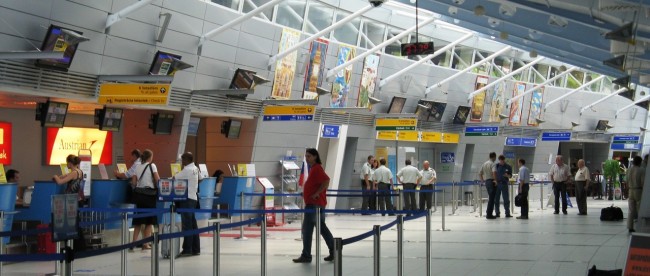Unchecked Baggage

On January 5, 2010, Irish authorities descended upon the home of an electrician who, just a couple of days earlier, had traveled from his native Slovakia back to his adopted home of Ireland. Acting on a tip from the Slovak authorities, the Irish police believed that the man — whose name was never released to the press — had recently smuggled explosives into Ireland. Specifically, the man was believed to have transported an explosive called RDX in his luggage during his January 2nd flight.
When police arrived and searched his belongings, their suspicions were confirmed. The man, thankfully for those on board his plane, didn’t have a way to detonate the explosive, and it was unclear what his intentions were. The Irish authorities detained him under suspicion of terrorism and informed the Slovak authorities that the suspect was in custody. The man protested, claiming he had no idea how the explosives got in his bag. A common story, at least if one goes by the cliche furthered by cop shows.
But in this case, it was also the truth.
On January 2, 2010, the Slovak government was running a drill to test the efficacy of its anti-terrorism measures. As the New York Times reported, the Slovaks had what, at first, seemed like a pretty good idea: take eight suitcases on flights leaving Slovakia, conceal plastic explosives somewhere inside them, and see how airport screeners react. Seven of the eight would-be-bombs were caught by security, but the eighth one slipped through their fingers. To make matters worse, the eight bags weren’t fake luggage or bags controlled by Slovak officials. Instead, the Slovak government, for some reason, thought it’d be a good idea to plant the plastic explosives in the bags of eight random travelers — and not tell them.
When the Slovak authorities realized that only seven of the eight bags of bomb-making material were stopped, they realized they had a problem on their hands. Somewhere in Ireland, a person who had just celebrated Christmas with his family returned home with an unexpected extra present, one which if it fell into the wrong hands could blow something up. Slovakia contacted Ireland to tell them about the RDX on the loose, and, as the Independent (Ireland) reported, something got lost in translation. Instead of Irish officials peacefully contacting the electrician and taking the explosives, “an Army explosive ordnance disposal team attended the scene and a number of houses in the area were evacuated.” The electrician was taken into custody, too.
The Slovakian authorities explained the error to their Irish counterparts and, as the Canadian Press reported, the man was released after several hours of questioning. Slovakia, of course, apologized profusely (to both Ireland and the individual) for the error.
Bonus Fact: On December 21, 1988, a terrorist snuck an explosive device onto Pan Am Flight 103 and blew up the plane over Lockerbie, Scotland. All 243 people on board and 11 more on the ground were killed. One of those victims was a 23-year-old named Flora Swire. About 18 months later, Flora’s father, Jim Swire, believed that the events could happen again, citing lax airport security. To prove his point, Mr. Swire, carrying a fake bomb which resembled the one used in the Lockerbie bombing, tried to board a British Airways flight departing London for New York. (The “bomb” was actually an old tape recorder and some marzipan, the latter chosen because it resembled a plastic explosive.) As the Los Angeles Times later reported, “the security check at Heathrow failed to turn it up.” The ruse earned Swire a meeting with the British Secretary of State for Transport, who promised a full review and to make relevant improvements.
From the Archives: Prawo Jazdy, Ireland’s Worst Driver. He’s a menace with many faces.
Take the Quiz: Name the things you can’t take in your carry-on luggage in the USA.
Related: Fruit-shaped (and flavored) marzipan. You can probably carry it in your luggage.
